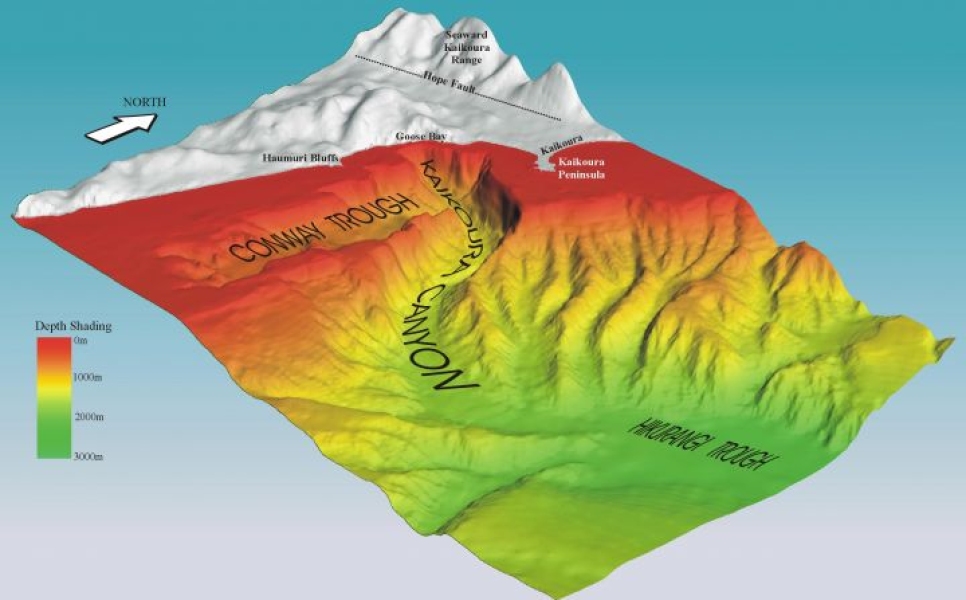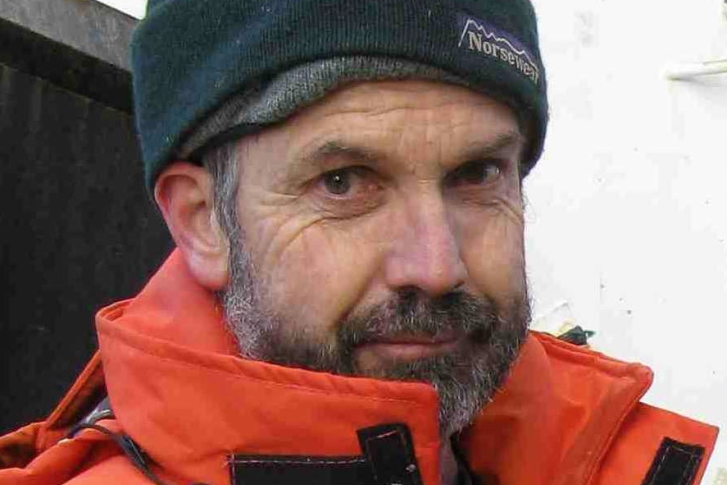New Zealand's Kaikoura Canyon is a 'biodiversity hotspot', containing far more life than seen before at such depths.
Overview
The Kaikoura Canyon is a submarine canyon just off the east coast of New Zealand's South Island. Canyons connect continental or island shelves with deep ocean basins.
There are at least an estimated 660 submarine canyons worldwide, but little is known about them in terms of how they contribute to deep-sea ecosystems and what life lives in them.
It is thought that at least some canyons are 'biomass hotspots' - areas where there is a unusually high amount of biomass (living matter). It has also been reported that some canyons make for more productive fishieres than regular slope environments, possibly due to the way they concentrate nutrients, organic debris, and animals.
Approach
The research was part the RENEWZ* project that used the RV Tangaroa during a voyage in 2006 funded by NOAA and NIWA. The research findings also contribute to NIWA’s ‘Impact of resource use on vulnerable deep-sea communities’ project.
*See our Posters page for more details
A number of methods were used to gather data about the biomass present at the bottom of the canyon:
Sampling
To sample the animals living in the sediments of the canyon, grab and core samples were taken, at a depth of about 1 km.
Seafloor photographic survey
NIWA's Deep Towed Imaging System (DTIS) took digital photographs in different parts of the canyon at comparable depths - as well as of a reference area off the Wairarapa slope.
The photos were then analysed to determine the abundance of large invertebrates and fish, as well as ‘lebenspurren’: signs of life on or beneath the sediment surface.
Multi-beam data and Geographical Information System (GIS) analysis
A digital map of the floor of the Kaikoura Canyon was generated using bathymetric data collected during the voyage by a multi-beam echo sounder. These data was then used to estimate the total area of the canyon that could be considered to be a biomass hotspot. The estimation was based on extrapolating the biomass values obtained by the grab samples to areas with similar physical characteristics to where the grabs were taken.
Bottom-fish trawl data
The analysis of fish abundance was undertaken using information gathered from the photographs and trawls taken during the voyage, as well as bottom-trawl survey data extracted from the Ministry of Fisheries' Trawl database.
Inventory of submarine canyons
Bathymetry databases and Google Earth were used to make an inventory of the world's submarine canyons. However, there are likely to be more than the counted 660 canyons, as some regions lack detailed (or any) bathymetric data.
*Exploration of Chemosynthetic Habitats of the New Zealand Region
Outcome
The video above shows the life on the Kaikoura Canyon seabed.
The Kaikoura Canyon is one of the most productive benthic (ocean floor) deep-sea habitats yet described, exceeding by 100 times the highest biomass measured for large invertebrates in at depths below 500m at similar habitats, except for around hydrothermal vents. This productivity may contribute significantly to the surrounding ecosystem, which includes deep commercial fisheries for hoki and orange roughy.
The research showed very dense populations of large invertebrates, burrowing sea cucumbers, spoon worms, bristle worms and irregular urchins at depths of 900-1100m. Some of the most abundant fish species in the canyon are rattails, who are presumably feeding on the high levels of biomass in the canyon's sediments. Footage taken during the voyage can be watched below.
It is possible that the canyon is a biomass hotspot due to its physical characteristics. The low relief (gentle slopes) of the canyon floor traps organic matter and sediments coming from the nearby coast, as well as organic debris from the productive overlying waters.
Of the minimum 660 submarine canyons worldwide, it is possible that about 15% (99) will have a similar level of biomass, due to having similar characteristics to the Kaikoura Canyon.



